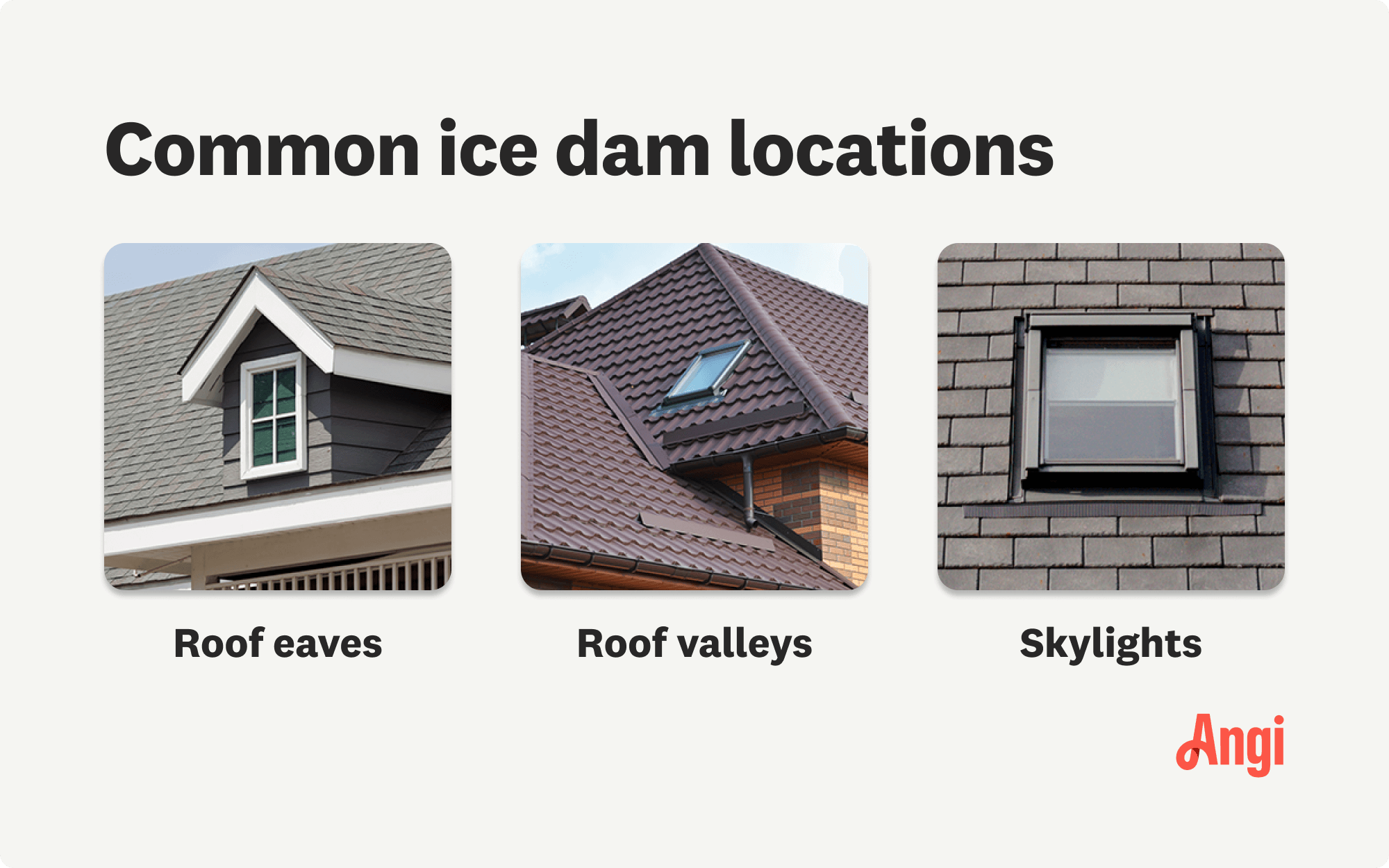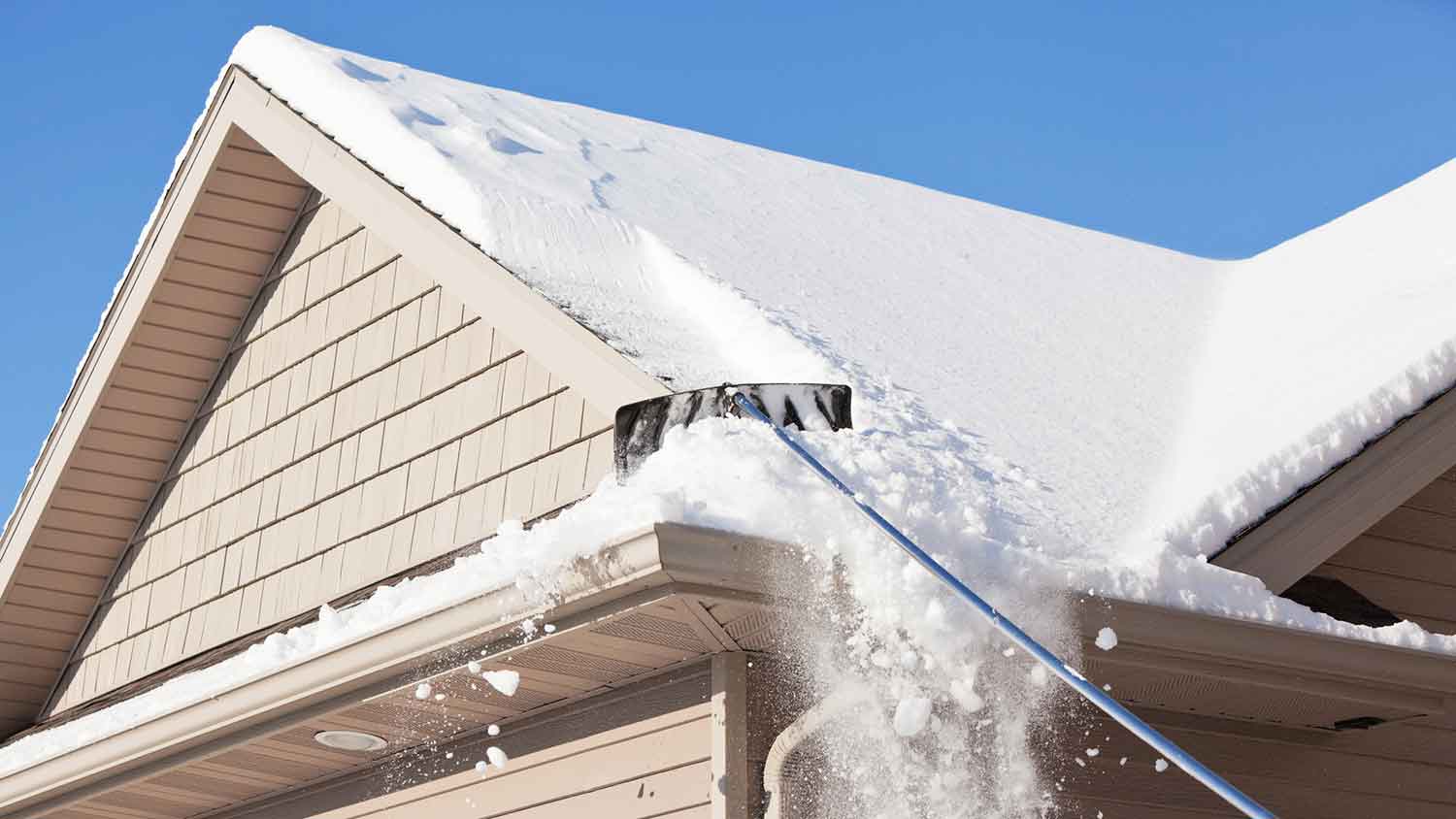Does Roof Raking Prevent Ice Dams? Find Out in This Guide
A little effort can save your roof from these damage-causing dams


Roof rakes can help prevent ice dams in some cases.
Roof raking works best with light snowfall and on single-story houses.
Other prevention methods may offer more protection from ice dams.
Seeing a big chunk of ice at the edge of your roof can mean big trouble. Ice dams can cause a lot of damage, so you’ll want to prevent these winter dangers from forming in the first place. Roof raking is one way to avoid ice dams—learn more about the best ways to prevent ice dams with a roof rake and other steps you can take to keep your home free from these damaging ice formations.
What Is an Ice Dam?
Ice dams form when snow on the roof starts to melt and drain down toward the roof edge. Once it hits the edge, colder temperatures cause the melted snow to refreeze, creating a chunk of ice. This ice chunk, called an ice dam, remains frozen and prevents additional water from draining off the roof, causing it to back up underneath and between the shingles.
Ice dams can cause roof damage when water makes its way underneath the shingles and penetrates the surface of the roof. The water can damage the roof decking and cause leaks inside your home.

Ice dams can be caused by a few different factors, but one of the most common is a too-warm attic. If the attic space isn’t properly insulated and the roof above it gets warmer than the rest of the roof, the layer of snow closest to the roof above the attic melts faster than the rest of the snow and can begin to travel down the roof, where it hits much colder areas and refreezes.
What Is a Roof Rake?
A roof rake is a tool consisting of a flat, wide head, usually made of aluminum or plastic, attached to an extendable telescoping handle that can reach up to 21 feet or more. They are designed to pull snow off the roof without damaging the shingles.
Can a Roof Rake Prevent Ice Dams?
When used properly, roof rakes are an important tool in your fight against ice dams. Removing snow from the roof while it’s still frozen prevents it from melting and then refreezing at the roof edge. Less snow means a more even rate of melting, too, so you’re unlikely to have parts of the roof melting faster than others, then running down into unmelted snow and refreezing.
Raking your roof may not always work—heavy snowfall can be difficult, even dangerous, to remove. Houses with second- or third-story roofs can also be hard to effectively and safely rake, since roof rakes have a limited reach. For light to moderate snowfall and on accessible roofs, though, roof raking can go a long way toward preventing ice dams.
"Your attic should be similar temperature to outside, which eliminates the melting on the roof which then will eliminate the ice problems. Keeping your attic cold through insulation on the attic floor and properly functioning ventilation is the solution."
— Todd Miller, President of Isaiah Industries, Piqua, OH
When to Use a Roof Rake

Knowing when to remove snow from your roof can help you avoid ice dams and keep your roof in good condition during snowfall. Ice dams commonly form after about six inches of snowfall, although it’s possible for them to develop before then, depending on temperature conditions. Rake your roof at or before six inches of snow has fallen, and repeat if needed if snowfall continues.
How to Use a Roof Rake
To safely remove snow from your roof using a roof rake, follow these steps:
Only use the roof rake when you’re standing on the ground. It is unsafe to roof rake while on a ladder.
Start at the edge of the roof and work your way up. It’s most important to keep the roof edges clear, since that’s where ice dams are most likely to form.
Use light pressure to avoid damaging your shingles. Leaving some snow behind is perfectly fine—you want to reduce the bulk of the snow, not scrape your roof clean.
Avoid raking over skylights, but carefully clear around chimneys and exhaust vents.
Take care not to exert pressure on your gutters or downspouts—you don’t want to damage them or rip them off. Do keep them clear, though. Melting snow needs somewhere to drain.
Alternative Ways to Prevent Ice Dams
While roof raking can help keep your roof clear, there are a few other ways to prevent ice dams that don’t involve bundling up and going outside in wintry weather.
Insulate Your Attic
A properly insulated attic is the most effective way to prevent ice dams. Keeping your home’s heat indoors instead of allowing it to escape through the roof will prevent snow from melting faster above the attic. With a well-insulated attic, all the snow on the roof will melt at the same rate, and you’ll avoid ice dams and all the problems they bring.
Keep Your Gutters Clear
Ice dams can form when gutters are clogged with ice or debris, leaving nowhere for melting snow to drain. Remove leaves and other debris and melt the ice in your gutters to keep the water flowing.
Call the Pros
For heavy snowfall or if your roof is too high to safely rake, contact a local roof cleaning company to remove the snow from your roof. The pros will be able to clear your roof, keeping you safe from the threat of ice dams.
Frequently Asked Questions
Any roof can develop ice dams, whether or not it has gutters. While gutters don’t cause ice dams, they can help to prevent them—having clear gutters gives melting snow a clear path to drain away and keeps it from accumulating at the edge of the roof.
Roof raking can damage shingles if improperly done. Be sure to use a rake that’s designed specifically for removing snow from a roof, and don’t use excessive pressure. Light, consistent pressure to pull down the bulk of the snow is all that’s needed—if you clear right down to the shingles, you’re probably using too much force and risking roof damage.















